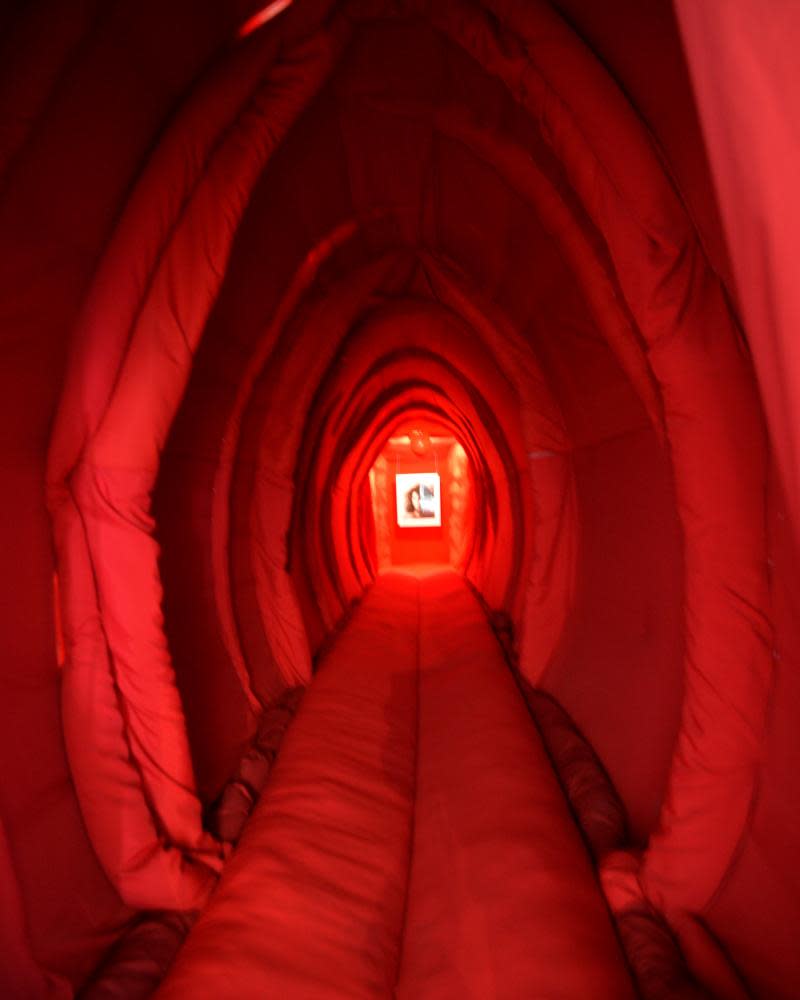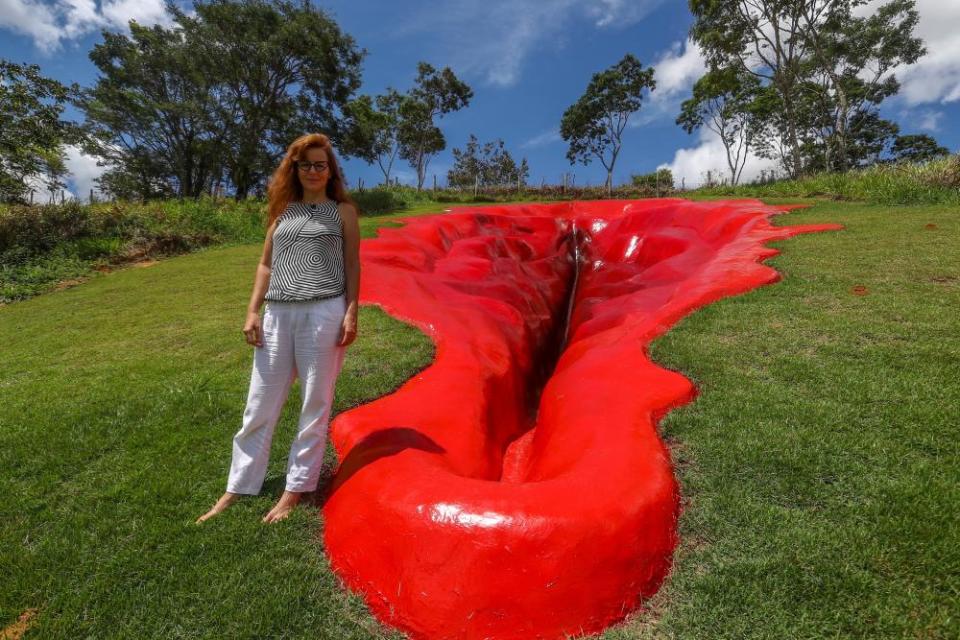Vulva decor: is Cara Delevingne’s vagina tunnel the start of something big?
Should you swap all your doors for a vagina tunnel? This is the pressing question raised by a video tour from the model and actor Cara Delevingne, who takes Architectural Digest around her LA home, and I believe the answer has to be “yes”. In her living room, a secret door in the mirrored panelling reveals a soft pink opening. Crawl right in, take the dog with you (Delevingne does). “I come in here to think, I come in here to create, I feel inspired in the vagina tunnel,” says Delevingne.
Delevingne, and her architect, Nicolò Bini, were inspired, she says repeatedly, by Alice in Wonderland, but this is more like a vulval version of the Lion, the Witch and the Wardrobe – the Chronicles of Labia, if you like. You climb out through a washing machine at the other end – “rebirthed and cleansed!” cries our host. The vagina’s rebirth powers are strong: Delevingne’s terrier goes in, and comes out a husky. The theme continues through the rest of the house: there is a floral display in her bedroom (“This lovely bouquet of vagina flowers”) and a “pussy palace”, a tactile pink suedette-lined secret room complete with swing and mirrored ceiling.

Could Delevingne do for vulvas what she did for eyebrows (make them big and make them everywhere)? There has been a move in recent years towards embracing the gynaecological. This includes Reshma Chhiba’s 2013 art installation in a former women’s prison, where she created a 12-metre “walk-in” vagina installation. In 2014, the British artist Jamie McCartney exhibited his Great Wall of Vagina piece, for which he cast more than 400 women’s genitalia. Vagina trousers made their glorious entrance in 2018 in Janelle Monáe’s music video and, the following year, a Vagina Museum opened in London. At the end of last year, Diva, a 33-metre-long vulva made by the artist Juliana Notari was installed into a hillside in north-east Brazil.
Yonic art is hardly new, points out Priya Khanchandani, a writer and the head of curatorial at the Design Museum. “The representation of the vagina has a long history in art and design, going back to prehistoric times,” she says. “It’s had very mixed receptions, from being celebrated or venerated, to being censored and considered something that should not be represented.” Now, she thinks, “we’re in an era of rebalancing. The modern skyline is full of phallic symbols and the male architect building an upward-thrusting building has had quite a lot of prominence.” But there has been a “resurgence of interest” in female designers, artists and architects, and “the idea of the vagina as a design trope is symbolic of that”.

It is also true that many artists have resisted a vulval interpretation. Georgia O’Keeffe consistently denied the idea, which took off in the 1920s, that her flower paintings deliberately resembled vulvas. When Zaha Hadid’s Al Wakrah stadium in Qatar was likened to a vagina, she shot back: “Everything with a hole in it is a vagina? That’s ridiculous.” Anish Kapoor was reported as saying Dirty Corner – his giant steel 2011 work, later exhibited at Versailles – represented “the vagina of the queen”, though later rowed back from this.
Still, art is open to interpretation (and there can be no mistake what many of the craft-makers on sites such as Etsy mean their vases, mugs and tea cosies to be). “The female body has been sexualised, fetishised and objectified to the point of being treated as almost an inanimate thing at times,” says Khanchandani. “The fact that we’re able to talk overtly about the female body, and that women feel that they can do so and can express it in their own interiors, is liberating and it represents a feminist stance.” Think of a man with a “vagina tunnel” at home, and it just seems creepy. “Do I think Delevingne’s vaginas are aesthetically interesting? I don’t know,” says Khanchandani. “Am I fascinated by them? Yes.”


